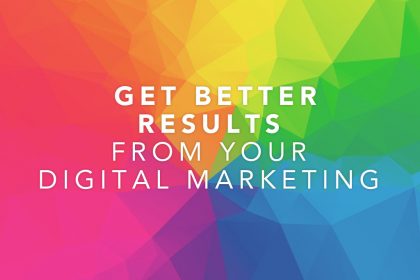Why audience insights are essential to your business (and where to find them)
Find out why audience insights are essential if you want your business to grow (or even survive!) and how you can use your website analytics and social media platforms to gather and use them.
How many of you monitor your website analytics? I’m going to put it out there and say the vast majority, if not every single one of you.
According to data in the Online Measurement and Strategy Report 2013, 56% of businesses use Google analytics exclusively, while another 40% use it in conjunction with other tools.
Shockingly though around 11% of business don’t look at their web analytics at all. Let me reiterate that – AT ALL! In my opinion, one of the major benefits of the explosion of online medium is that it’s far more measurable than its traditional predecessors. We are in the age of ‘instant’ and it’s all so easy to fix things that aren’t working at their optimum for your business.
Website analytics offer valuable insights into the success of your online presence, confirming whether your sales and marketing efforts are successful – ultimately giving you the opportunity to make amendments and improvements to your current segmentation strategies.
You need to know your audience
But I’m not talking solely about website analytics, I’m talking about audience insights. Truly understanding who your audience and customers are means that you can tailor your every move to make sure that you are delivering the most valuable content and experience – making you the most appealing option out there.
The information that website analytics tools provide can help you improve your business, but only once you know what to actually do with it. So what should you look at? Here are some suggestions:
- Looking at the channels that are bringing visitors to your site is useful for allowing you to optimise your presence in those places.
- Another useful feature is how long visitors are staying, and the pages they are exiting from. This will help you make your pages more engaging to your users.
- New vs returning visitors is an interesting insight into conversion. If your new customers are buying but never returning, then focusing on increasing new customers with campaigns will boost your sales. Or if your returning customers are your most valuable, looking at repeat communication tailored to their likes/dislikes and other areas of interest will enable you to maintain their interest.
- By drilling down visitor location information to cities, you can get an overview of exactly who your audience are.
However, this is all fairly basic data that will only enable you to make guesses about how to engage with your audience.
How to delve deeper into your audience
To delve deeper into your, you need to turn to the holy grail of advertising – social media. Social media platform are far more beneficial than Google thanks to the ‘nitty gritty’ details that they hold on their users, enabling you to obtain authentic data for free.
As Dean Lynn, Search Manager at Datify explains:
“In the US, Facebook purchased data from store cards, credit cards and banks and mapped it against its user’s profiles. This enabled businesses to extract the data that helped them market their business to them, or even create a new offering based on the information.”
From a marketing perspective, this allows you to create tailored campaign to the audience based on demographics such as gender, marital status to job title and even income. Viewing information such as the pages that your audience are liking, their purchasing activity and the level of brand affinity they show, helps you to drill down even further.
Twitter followed suit and now offers a audience insight tool, allowing you to filter between all its users, your followers or your organic audience, and even compare trends between the sets of data.
Two experiences of using social media insights
Darren Sharples from Cloudstix shares his experience of the impact of social media:
“Social Media platforms have certainly helped Cloudstix see exactly what our customers and target audience think of our products and to better them.
By being able to instantly see reviews both positive and negative of various products and manufacturers it has helped us to not only provide the products that people want and love but also avoid the ones that have been slated by the consumer. We heavily monitor social media and vaping forums to ensure we are at the forefront of this information. In addition to this, social media allows us to interact with our customers, even out of hours, to ensure our customer service is always on the go when somebody needs you.
More often than not our customer has a small question and cannot wait for the office to reopen to respond to an email or telephone call and so our customer service team can quick reply via social media immediately saving the customer time and further issues.”
James Qualtrough Co-founder at Slidecraft explains how he feels using audience insights with regards to a competitive aspect:
“For us, audience insights are less about setting ourselves apart from the competition and more about building a community around our product. Direct insight from our early beta testers fundamentally changed how our product now looks and functions. We’ve never wanted to build a product on our assumptions and so the only way to avoid this has been to learn directly from our users.
I think this is pretty widely understood in the startup world and I would expect most early-stage companies to be doing similar. This obviously becomes a much bigger challenge as the company grows but that’s a challenge we’re looking forward to. There are some really good examples out there of companies building communities around their product and brand. Buffer being one that immediately jumps to mind.”
And don’t overlook LinkedIn
Although often overlooked, LinkedIn is becoming one of the go-to platforms for content distribution, giving you the opportunity to cross promote through LinkedIn Groups and Pulse LinkedIn and employee connections.
While LinkdIn is a business-focussed platform, I feel that the audience insights tools may be effective in generating leads from a B2B perspective.
You can’t afford not to be mobile-optimised
Please tell me that your website is mobile optimised? Because if it isn’t, it’s almost like you don’t want your audience to visit your site.
I was asked a great question that made me stop and think recently. I was asked “When was the last time you looked at a website from a laptop or computer when you weren’t working?” My answer (after some deliberation) was around 15 months.
I’m not alone here. Audience insights show that 80% of internet users access it from a smartphone or tablet, spending 12% of their time on Safari alone.
If the push of the Mobilegeddon Google update (the one that favours sites that are mobile optimised) wasn’t enough to force you into action then the following information might be.
Mobile users are impatient
Users are impatient, according to this article, 57% of mobile users will abandon a site if it isn’t mobile optimised. It’s even worse news if you offer e-commerce on your site, because 30% will abandon a purchase if the cart isn’t mobile optimised.
Will Craig, Director at Digital Impact shares his experiences:
“Jump on any train in the UK and you’ll see why responsive design is an essential part of modern web design. Everyone gets on, sits down and pulls out their phone. They’re checking emails, reading books or killing time with Netflix – and all on a screen just five inches across!
Faster mobile internet, better mobile technology and more considerate web design mean people are ditching their PCs for their smartphones. In fact, the total number of mobile internet users actually overtook desktop users back in 2014.Here’s one quick example from our agency.
One of our clients rents out wedding attire and somewhere around 70% of his users access his website using mobile devices. Now, imagine he had an old unresponsive website. How many of those mobile users would happily pinch and zoom around a website that’s designed for a big laptop screen? Hardly any is my guess.
Simply put, responsive sites are good for your users, good for search engines and good for the future. Unresponsive websites, on the other hand, will alienate potential customers and get you knocked down the search rankings.”
Insights are essential to business growth
These audience insights tools are just another nod to the fact that social media is becoming deeply engrained within every part of our modern culture.
The data that they provide is invaluable and will change the way that you do your marketing, by enabling you to keep changing the way that you do your marketing depending on how your audience are receiving your efforts. When used in conjunction with website analytics will provide you with a complete comprehensive view of your customer and audience.
The insights will prevents you from churning out content that will neither inform, nor engage your audience, effectively wasting your time and budget.
In short, insights – whether they’re from analytics, social media or digital marketing research are essential for any modern business with an online presence. So if you don’t already, start gathering and using yours today!
Written by Rebecca Moore.










